On this article, we’re going to share with you essential and high-yield anatomy notes for FCPS Part 1. These notes have been developed by an nameless scholar who compiled an inventory of 300+ high-yield anatomy facts/pearls based mostly on the past papers of FCPS Part 1 examination.
Under are the chapters coated in these high-yield anatomy notes for FCPS Part 1 examination:
- The Back
- Upper Limb
- Lower Limb
- Thorax
- Abdomen
- Pelvis & Perineum
- Head and Neck
- Mixed Topics
These high-yield anatomy notes for FCPS Part 1 are brief and to-the-point. You may simply evaluate them if you are taking a experience on a bus or sipping some good tea/espresso in a restaurant.
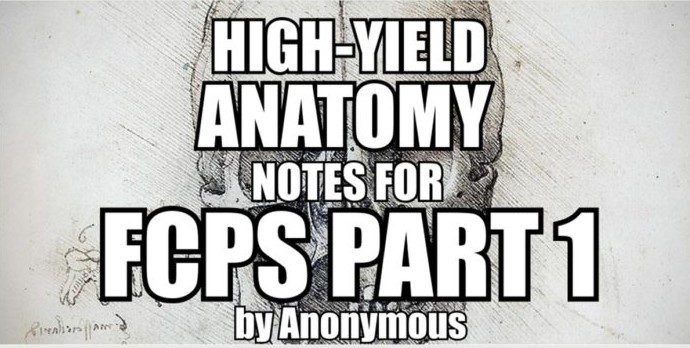
For the benefit of readability, we now have tabulated all these high-yield anatomy notes for FCPS Part 1 with the intention to simply learn and skim by if mandatory.
We hope that you simply discover this publish helpful in your FCPS Part 1 exam preparation for the topic of anatomy.
CHECK ALSO:
Download Netter’s Anatomy Coloring Book PDF Free [Direct Link]
High-Yield Anatomy Notes for FCPS Part 1
Under are the high-yield anatomy notes for FCPS Part 1 examination. The details and their solutions have been offered in a tabulated kind for the benefit of readability.
| BACK | |
| FACTS | ANSWERS |
| 1. Exaggerated over-curvature of thoracic area of vertebral column | Kyphosis |
| 2. Lateral deviation of vertebral column | Scoliosis |
| 3. Major feature of cervical vertebrae | Transverse foramina |
| 4. Vertebra located at level of iliac crest | L4 |
| 5. Ligament that connects internal surface of laminae of vertebrae | Ligamentum flavum |
| 6. Ligament that checks hyperextension of vertebral column | Anterior longitudinal |
| 7. Ligament affected by whiplash injury | Anterior longitudinal |
| 8. Ligament which limits skull rotation | Alar |
| 9. Defective portion of vertebra with spondylolisthesis in cervical area | Pedicle |
| 10. Defective portion of vertebra with spondylolisthesis in lumbar area | Pars interarticularis, Lamina |
| 11. Common direction of all superior articular facets of vertebrae | Posterior |
| 12. Structure in contact with posterior surface of dens | Transverse ligament of atlas (part of cruciate) |
| 13. Most commonly herniated intervertebral disc | L4-5 |
| 14. Most common nerve compressed with herniated intervertebral disc | L5 |
| 15. Spinal nerve affected by protrusion of the disc between C5/6 | C6 |
| 16. Thoracic intercostal space located deep to triangle of auscultation | sixth |
| 17. Vertebral level of lumbar puncture | L4 |
| 18. Innervation of suboccipital muscles | Suboccipital nerve |
| 19. Roof of suboccipital triangle | Semispinalis capitis |
| 20. Floor of suboccipital triangle | Posterior arch of atlas; posterior atlanto-occipital membrane |
| 21. Major vessel within suboccipital triangle | Vertebral artery |
| 22. Synonym for dorsal ramus of C2 | Greater occipital nerve |
| 23. Inferior extent of dura-arachnoid sac | SV2 |
| 24. Inferior extent of spinal cord | LV2 |
| 25. Location of internal vertebral plexus | Epidural space |
| UPPER LIMB | |
| 26. Most frequently fractured bone of body | Clavicle |
| 27. Most frequently dislocated carpal bone | Lunate |
| 28. Most frequently fracture carpal bone | Scaphoid |
| 29. Name of fracture of distal radius that produces “dinner fork” appearance | Colleʼs fracture |
| 30. Nerve injured with fracture of surgical neck of humerus | Axillary |
| 31. Nerve injured with fracture of medial humeral epicondyle | Ulnar |
| 32. Nerve injured with fracture of shaft of humerus | Radial |
| 33. Nerve injured in wrist drop | Radial |
| 34. Muscle that is chief flexor and chief extensor at shoulder joint | Deltoid |
| 35. Muscles innervated by axillary nerve | Deltoid and teres minor |
| 36. Muscle that initiates abduction of arm | Supraspinatus |
| 37. Most commonly torn tendon of rotator cuff | Supraspinatus |
| 38. Two muscles that rotate scapula for full abduction of arm | Trapezius and serratus anterior |
| 39. Tendon that courses through shoulder joint | Long head of biceps |
| 40. Chief supinator muscle of hand | Biceps brachii |
| 41. Injury to what nerve causes winged scapula | Long thoracic nerve |
| 42. Spinal levels of axillary nerve | C5 and C6 |
| 43. Spinal levels to muscles of the hand | C8 and T1 |
| 44. Dermatome of thumb | C6 |
| 45. Nerve to thenar compartment | Recurrent branch of Median |
| 46. Innervation of adductor pollicis | Ulnar (deep branch) |
| 47. Innervation to all interosseous muscles | Ulnar (deep branch) |
| 48. Region affected by upper trunk injury of brachial plexus | Shoulder |
| 49. Region affected by lower trunk injury of brachial plexus | Intrinsic hand muscles |
| 50. Nerve compressed with carpal tunnel syndrome | Median |
| 51. Nerve affected by cubital tunnel syndrome | Ulnar |
| 52. Paralysis of which muscles results in total “claw” hand | Lumbricals |
| LOWER LIMB | |
| 53. Boundaries of femoral triangle | Inguinal ligament, sartorius and adductor longus |
| 54. Structure immediately lateral to femoral sheath | Femoral nerve |
| 55. Structure immediately medial to femoral artery in femoral sheath | Femoral vein |
| 56. Contents of femoral canal | Deep inguinal lymph nodes |
| 57. Medial boundary of femoral ring | Lacunar ligament |
| 58. Structures that course throughout entire length of adductor canal | Femoral artery and vein |
| 59. Structures that course through only portion of adductor canal | Saphenous nerve, nerve to vastus medialis, descending genicular vessels |
| 60. Muscle that forms floor of popliteal fossa | Popliteus |
| 61. Muscle that is chief flexor at hip joint | Iliopsoas |
| 62. Muscle that prevents pelvis from tilting when walking | Gluteus medius |
| 63. Muscle that extends leg | Quadriceps femoris |
| 64. Muscle that unlocks knee joint | Popliteus |
| 65. Muscle affected with “foot slap” | Tibialis anterior |
| 66. Chief invertors of foot | Tibialis anterior and posterior |
| 67. Chief evertors of foot | Fibularis longus and brevis |
| 68. Ligament that checks backward displacement of femur on tibia | Anterior cruciate |
| 69. Ligament laxity with positive valgus maneuver | Medial collateral |
| 70. Most commonly injured ankle ligament | Anterior talofibular |
| 71. Ligament stretched with “flat foot” | Plantar calcaneonavicular (spring) |
| 72. Joints for movements of inversion and eversion | Subtalar and transverse Tarsa |
| 73. Major artery to head of femur in adult | Medial femoral circumflex |
| 74. Nerve affected with fracture of head and neck of fibula | Common fibular |
| 75. Tendon affected with avulsion fracture of 5th metatarsal | Fibularis brevis |
| 76. Innervation of adductor magnus | Obturator, tibial portion of Sciatic |
| 77. Nerve affected with tarsal tunnel syndrome | Tibial |
| 78. Cutaneous innervation to medial side of foot | Saphenous (L4) |
| 79. Cutaneous innervation to lateral side of foot | Sural (S1) |
| 80. Cutaneous innervation of heel | Tibial |
| 81. Cutaneous innervation to dorsal aspect of web between toes 1 and 2 | Deep fibular |
| 82. Cutaneous innervation of most of dorsum of foot | Superficial fibular |
| 83. Major dermatome to big toe | L4 |
| 84. Dermatome to small toe | S1 |
| 85. Spinal level of patellar reflex | L4 |
| 86. Spinal level of Achilles reflex | S1 |
| 87. Locking of knee when walking suggests | Meniscus injury |
| 88. Major injury triad with lateral impact to knee | Medial collateral, medial meniscus and anterior cruciate ligament |
| THORAX | |
| 89. Dermatome around nipple | T4 |
| 90. Vertebral level at inferior angle of scapula | TV7 |
| 91. Structure that lies immediately posterior to manubrium | Thymus |
| 92. Rib related to oblique fissure of lung posteriorly | 2nd |
| 93. Rib paralleled by horizontal fissure of right lung | 4th |
| 94. Inferior extent of lung at midclavicular line | 6th rib |
| 95. Inferior extent of pleura at midclavicular line | 8th rib |
| 96. Inferior extent of lung at midaxillary line | 8th rib |
| 97. Inferior extent of pleura at midaxillary line | 10th rib |
| 98. Inferior extent of lung posteriorly | 10th rib |
| 99. Inferior extent of pleura posteriorly | 12th rib |
| 100. Innervation of costal pleura | Intercostal nerve |
| 101. Innervation of mediastinal pleura | Phrenic nerve |
| 102. Site for auscultation of pulmonary valve | Left 2nd interspace |
| 103. Site for auscultation of aortic valve | Right 2nd interspace |
| 104. Site for auscultation of tricuspid valve | Xiphisternal joint |
| 105. Site for auscultation of mitral valve | Left 5th interspace, midclavicular line |
| 106. Heart chamber with greatest sternocostal projection | Right ventricle |
| 107. Chamber that forms apex of heart | Left ventricle |
| 108. major chamber that forms base of heart | Left atrium |
| 109. Heart chamber that contains moderator band | Right ventricle |
| 110. Artery that determines coronary dominance | Posterior interventricular |
| 111. Usual origin of SA and AV nodal arteries | Right coronary artery |
| 112. Location of SA node | Cristae terminalis |
| 113. Major vessel that drains the musculature of the heart | Coronary sinus |
| 114. Innervation of fibrous pericardium | Phrenic nerve |
| 115. Most common cause of systolic ejection murmur | Aortic stenosis |
| 116. Rib associated with sternal angle | Second rib |
| 117. Vertebral level associated with sternal angle | Disc between TV4-5 |
| 118. Location of ductus arteriosus | Between left pulmonary artery and aorta |
| 119. Nerve potentially injured with repair of patent ductus arteriosus | Left recurrent laryngeal Nerve |
| 120. Veins that unite to form brachiocephalic | Subclavian and internal Jugular |
| 121. Veins that unite to form superior vena cava | Right and left Brachiocephalic |
| 122. Termination of azygos vein | Superior vena cava |
| 123. Structures that lie to right and left of thoracic duct | Azygos veins, aorta |
| 124. Spinal levels of greater splanchnic nerve | T5-9 |
| 125. Spinal levels of lesser splanchnic nerve | T10-11 |
| 126. Spinal levels of least splanchnic nerve | T12 |
| 127. Thoracic structures that can compress the esophagus | Left bronchus, aorta and Diaphragm |
| 128. Disease often associated with thymoma | Myasthenia gravis |
| ABDOMEN | |
| 129. Remnant of umbilical vein | Round ligament of liver |
| 130. Dermatome to umbilical area | T10 |
| 131. Dermatome to suprapubic area | L1 |
| 132. Vertebral level associated with origin of celiac artery | T12 |
| 133. Vertebral level associated with origin of SMA | L1 |
| 134. Vertebral level associated with origin renal arteries | L2 |
| 135. Vertebral level associated with origin of gonadal arteries | L2 |
| 136. Vertebral level associated with origin of IMA | L3 |
| 137. Vertebral level of umbilicus | Disc L3-4 |
| 138. Vertebral level of aortic bifurcation | L5 |
| 139. Vertebral level for formation of IVC | L5 |
| 140. Spinal levels to muscles of anterior abdominal wall | T7 – L1 |
| 141. Structure that forms superficial inguinal ring | Aponeurosis of external Oblique |
| 142. Structure that forms deep inguinal ring | Trasnversalis fasica |
| 143. Structure that form floor of inguinal canal | Inguinal ligament |
| 144. Bony attachments of inguinal ligament | ASIS and pubic tubercle |
| 145. Structures that form conjoint tendon | Internal oblique and transversus abdominis |
| 146. Abdominal layer continuous with external spermatic fascia | External oblique |
| 147. Abdominal continuous with cremasteric fascia | Internal oblique |
| 148. Abdominal layer continuous with internal spermatic fascia | Transversalis fascia |
| 149. Structure that lies between protrusion sites of direct and indirect hernias | Inferior epigastric artery |
| 150. Type of hernia that enters deep inguinal ring | Indirect inguinal |
| 151. Most common type of hernia | Indirect inguinal |
| 152. Most common side for indirect inguinal hernia | Right |
| 153. Type of hernia that protrudes through Hesselbachʼs triangle | Direct inguinal |
| 154. Boundaries of Hesselbachʼs triangle | nguinal ligament, rectus abdominis, inferior epigastric artery and vein |
| 155. Type of hernia that traverses both deep and superficial rings | Indirect inguinal |
| 156. Fluid in processus vaginalis | Hydrocele |
| 157. Communication between greater and lesser sacs | Epiploic foramen |
| 158. Superior border of epiploic foramen | Caudate lobe of liver |
| 159. Inferior border of epiploic foramen | Part one of duodenum |
| 160. Posterior border of epiploic foramen | IVC |
| 161. Ligament that contains portal vein, hepatic artery and bile duct | Hepatoduodenal (lesser omentum) |
| 162. Structure that limits spread of ascitic fluid in left paracolic gutter | Phrenicocolic ligament |
| 163. Structuer that limits spread of ascitic fluid within infracolic compartment | Root of mesentary |
| 164. Superior extent of right paracolic gutter | Hepatorenal recess |
| 165. Most inferior portion of peritoneal cavity | Rectouterine pouch |
| 166. Structures supplied by celiac artery | Stomach, duodenum, liver, spleen, gallbladder, pancreas |
| 167. Branches of celiac artery | Left gastric, common hepatic and splenic |
| 168. Blood supply to stomach | Right and left gastroepiploics, right, left and short gastric |
| 169. Major structures of bed of stomach | Pancreas, spleen, left kidney and suprarenal gland, diaphragm |
| 170. Ducts that join to form common bile duct | Cystic and common Hepatic |
| 171. Structure that separates right and left lobes of liver | Falciform ligament |
| 172. Origin of cystic artery | Right hepatic artery |
| 173. Ribs directly related to spleen | Ribs 9-11 |
| 174. Organs related to spleen | Stomach, colon, left kidney, tail of pancreas |
| 175. Artery to small intestine | SMA |
| 176. Organs supplied by both celiac and SMA | Duodenum, pancreas |
| 177. Organs supplied by both SMA and IMA | Transverse colon |
| 178. Vessel located posterior to head of pancreas | IVC |
| 179. Vessel located posterior to neck of pancreas | Portal vein |
| 180. Veins that unite to form portal vein | Splenic and SMV |
| 181. Clinically importatnt organs for portacaval anastomoses | Esophagus, rectum, liver |
| 182. Two structures that lies posterior to SMA near its origin | Left renal vein, duodenum |
| 183. Three distinguishing features of the large intestine | Tenia coli, haustra, epiploic appendages |
| 184. Termination of left gonadal vein | Left renal vein |
| 185. Termination of right gonadal vein | Inferior vena cava |
| 186. Location of initial pain of appendicitis | Umbilical region |
| 187. Motor innervation of diaphragm | Phrenic |
| 188. Sensory innervation of diaphragm | Phrenic + intercostal |
| 189. Spinal levels of phrenic nerve | C3-5 |
| 190. Vertebral level that inferior vena cava traverses diaphragm | T8 |
| 191. Vertebral level that esophagus traverses diaphragm | T10 |
| 192. Structures that traverse diaphragm with esophagus | Vagal trunks |
| 193. Vertebral level that aorta traverses diaphragm | T12 |
| 194. Structure that traverses diaphragm with aorta | Thoracic duct |
| 195. Structure that traverses diaphragm through crura | Greater, lesser and least splanchnic nerves |
| PELVIS AND PERINEUM | |
| 196. Structure that separates pelvis and perineum | Pelvic diaphragm |
| 197. Two major components of pelvic diaphragm | Levator ani + coccygeus |
| 198. Two major components of levator ani | Pubococcygeus and Iliococcygeus |
| 199. Two muscles which close lateral pelvic wall | Obturator internus and Piriformis |
| 200. Means by which obturator internus exits pelvis | Lesser sciatic foramen |
| 201. Means by which piriformis exits pelvis | Greater sciatic foramen |
| 202. Innervation of detrusor | Pelvic splanchnics (S2-4) |
| 203. Remnants of umbilical arteries | Medial umbilical ligaments |
| 204. Chief artery to rectal mucosa | Superior rectal |
| 205. Most common type of pelvic inlet in females | Gynecoid |
| 206. Two remnants of gubernaculum in females | Ovarian and round Ligament |
| 207. Ligament that contains ovarian vessels | Suspensory ligament of Ovary |
| 208. Lymph nodes for ovary and testes | Lumbar |
| 209. Normal position of uterus | Anterverted, anteflexed |
| 210. Chief uterine support | Pubococcygeus |
| 211. Ligament that contains uterine vessels | Lateral cervical |
| 212. Structure potentially injured with hysterectomy | Ureter |
| 213. Relation of ureter to uterine artery | Inferior and posterior |
| 214. Structure that separates deep and superficial perineal spaces | Perineal membrane |
| 215. Bony landmarks between anal and UG triangles | Ischial tuberosities |
| 216. Lateral wall of ischioanal fossa | Fascia of obturator Internus |
| 217. Structure that forms the pudendal canal | Fascia of obturator Internus |
| 218. Structure that separates internal and external hemorrhoids | Pectinate line |
| 219. Lymph nodes for area superior to pectinate line of anal cana | Internal iliac, IM |
| 220. Lymph nodes for area inferior to pectinate line of anal canal | Superficial inguinal |
| 221. Major structure of deep perineal space | Sphincter urethrae |
| 222. Lymph nodes for glans penis | Deep inguinal |
| 223. Muscle which compresses the bulb of penis | Bulbospongiosus |
| 224. Muscle which compresses the crus of penis | Ischiocavernosus |
| 225. Muscles which meet at the perineal body | Superficial and deep perineal, bulbospongiosus, external anal sphincter, pubococcygeus |
| HEAD AND NECK | |
| 226. Vertebral level of hyoid bone | CV3 |
| 227. Vertebral level of thyroid cartilage | CV4,5 |
| 228. Vertebral level of cricoid cartilage | CV6 |
| 229. Muscles that are innervated by CN XI | Trapezius, SCM |
| 230. Structures that course between anterior and middle scalene | Brachial plexus, subclavian artery |
| 231. Innervation of omohyoid, sternohyoid and sternothyroid | Ansa cervicalis |
| 232. Innervation of digastric | Anterior belly = CN V Posterior belly = CN VII |
| 233. Innervation of carotid sinus and carotid body | CN IX, CN X |
| 234. Major structures to pass through pharyngeal wall superior to superior constrictor | Auditory tube, levator veli Palatini |
| 235. Nerves of pharyngeal plexus | CN IX, CN X, Sympathetics |
| 236. Only muscle innervated by CN IX | Stylopharyngeus |
| 237. Structures that pierce thyrohyoid membrane | Internal laryngeal nerve, superior laryngeal artery |
| 238. Only muscle to abduct vocal cords | Posterior cricoarytenoid |
| 239. Innervation of cricothyroid | External laryngeal nerve |
| 240. Innervation of laryngeal muscles exclusive of cricothyroid | Recurrent laryngeal |
| 241. Muscle that increases tension on vocal cords | Cricothyroid |
| 242. Sensory nerve to larynx superior to vocal cords | Internal laryngeal |
| 243. Sensory nerve to larynx inferior to vocal cords | Recurrent laryngeal |
| 244. Site of aspirated lodged fishbone | Piriform recess |
| 245. Afferent – efferent limbs of gag reflex | CN IX – CN X |
| 246. Afferent – efferent limbs of cough reflex | CN X – CN X |
| 247. Nerve injury that causes hoarseness following thyroid surgery | Recurrent laryngeal |
| 248. Chief structures that traverse internal acoustic meatus | CN VII and VIII |
| 249. Foramen where CN VII exits skull | Stylomastoid foramen |
| 250. Major arterial supply to calvaria and supratentorial dura | Middle meningeal |
| 251. Major cutaneous nerve of face | CN V |
| 252. Major artery to internal structures of head | Maxillary |
| 253. Spinal levels of sympathetic fibers to head | T1 – 2 |
| 254. Autonomic ganglia for CN III | Ciliary |
| 255. Sensory ganglia for CN VII | Geniculate |
| 256. Autonomic ganglia for CN VII | PPG and submandibular |
| 257. Autonomic ganglia for CN IX | Otic |
| 258. Muscle attached to disc of TMJ | Lateral pterygoid |
| 259. Muscle that retracts mandible | Temporalis |
| 260. Major nerve to TMJ (pain) | Auriculotemporal |
| 261. Specific nerves that elicit secretion from the parotid gland | Tympanic branch of CN IX and lesser petrosal |
| 262. Branch of CN V that carries parasympathetics to parotid | Auriculotemporal |
| 263. Structure that opens into superior meatus of nasal cavity | Posterior ethmoid sinus |
| 264. Structures that open into middle meatus of nasal cavity | Frontal, maxillary, anterior and middle ethmoid |
| 265. Structures that opens into inferior meatus of nasal cavity | Nasolacrimal duct |
| 266. Major artery to nasal cavity | Sphenopalatine |
| 267. Most common site of nose bleed | Kiesselbachʼs plexus |
| 268. Innervation of levator veli palatini | CN X |
| 269. Muscle that opens auditory tube | Tensor veli palatini |
| 270. Innervation of tensor veli palatini | CN V3 |
| 271. Nerve that provides taste to anterior 2/3 of tongue | Chorda tympani |
| 272. Site of cell bodies for nerve that carries taste to anterior 2/3 of tongue | Geniculate ganglion |
| 273. Specific nerve that elicits secretion from submandibular gland | Chorda tympani |
| 274. Branch of CN V that carries parasympathetic to submandibular | Lingual |
| 275. Nerve injured when tonsilar pillars sag and uvula deviates | CN X |
| 276. Nerve potentially injured with tonsillectomy | CN IX |
| 277. Muscle that protrudes tongue | Genioglossus |
| 278. Nerve injured when deviation of protruded tongue | Ipsilateral CN XII |
| 279. Specific nerve that stimulates tear production | Greater petrosal CN VII |
| 280. Sensory nerve to cornea | CN V1 (nasociliary) |
| 281. Muscle that elevates and abducts eye | Inferior oblique |
| 282. Muscle that depresses and abducts eye | Superior oblique |
| 283. Site of preganglionic nerve cells that elicits dilation of pupil | Lateral horn, T1 – 2 |
| 284. Site of postganglionic nerve cells that elicits dilation of pupil | Superior cervical ganglion |
| 285. Site of preganglionic nerve cells that elicits constriction of pupil | Edinger-Westphal |
| 286. Site of postganglionic nerve cells that elicits constriction of pupil | Ciliary ganglion |
| 287. Innervation of external surface of tympanic membrane | Auriculotemporal, CN X |
| 288. Innervation of internal surface of tympanic membrane | CN IX |
| MIXED TOPICS | |
| 289. Level where ascending aorta is continuous with arch of aorta | TV4-5 |
| 290. Level where arch of aorta is continuous with descending aorta | TV4-5 |
| 291. Effect of sympathetic nerves on lungs | Bronchodilation, Vasoconstriction |
| 292. Effect of parasympathetic nerves on lungs | Bronchoconstriction, Vasodilation |
| 293. Rationale for aspirated small objects to go to right primary bronchus | Wider diameter, shorter and more vertical |
| 294. Needle location for therapeutic pleural tapping | Superior to 12th rib, posteriorly |
| 295. Name given to portion of right ventricle prior to beginning of pulmonary trunk | conus arteriosum or infundibulum |
| 296. Name given to orientation where uterus and vagina intersect at angle of 90 degrees | Anteversion |
| 297. Name given to orientation where uterine body and cervix intersect at angle of 10-15 degrees | Anteflexion |
| 298. Ridge located between sinus venarum and right ventricle | Cristae terminalis |
| 299. Nerve at risk when performing thyroidectomy | Both left and right recurrent laryngeal nerves |
| 300. Specific muscle that holds patella in place | Vastus medialis |
| 301. First portion of quadriceps femoris to atrophy with injury to femoral nerve | Vastus medialis |
| 302. Last portion of quadriceps femoris to recover following injury | Vastus medialis |
| 303. Innervation to nail bed of middle finger | Median nerve |
| 304. Innervation to nail bed of ring finger | Ulnar and median |
| 305. Spinal nerve affected with herniated disc at L3/L4 | L4 |
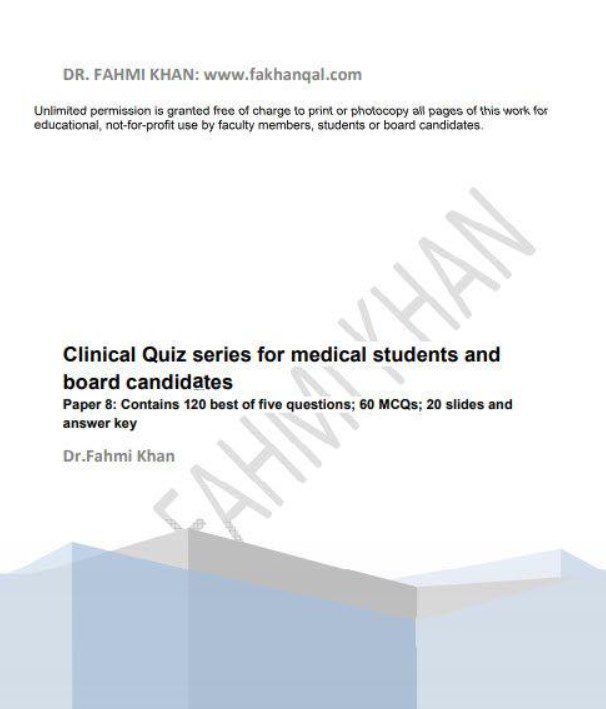
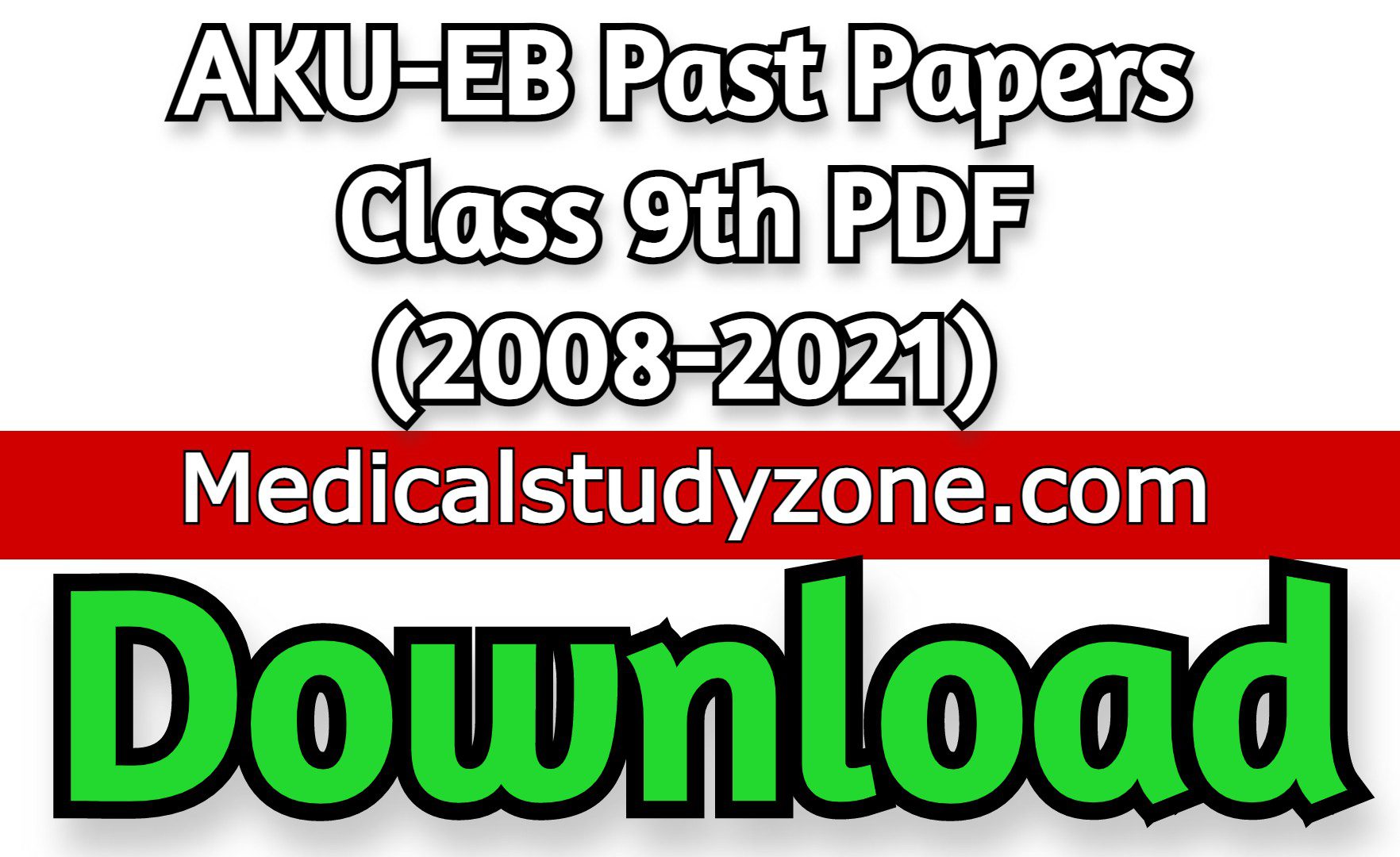
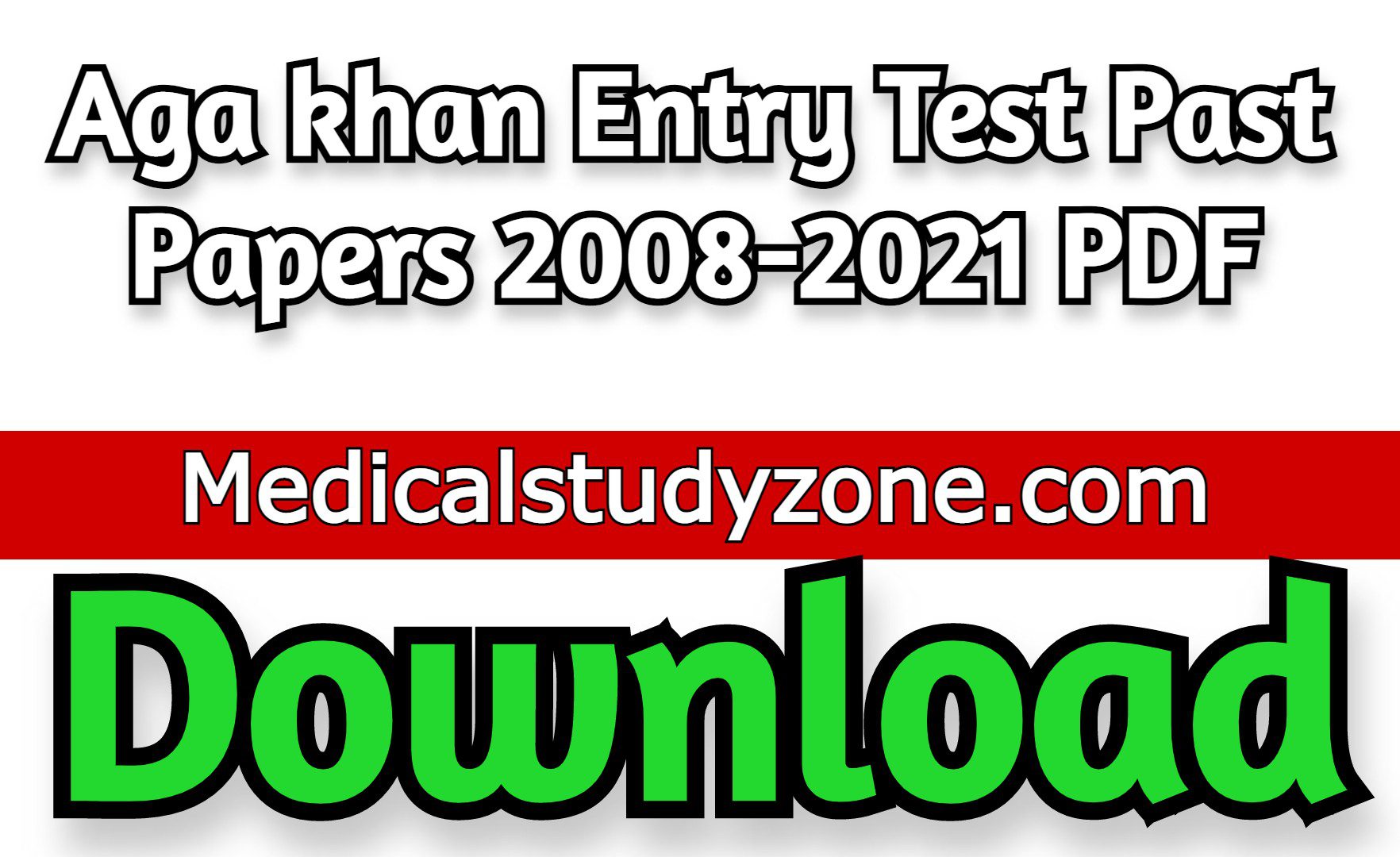
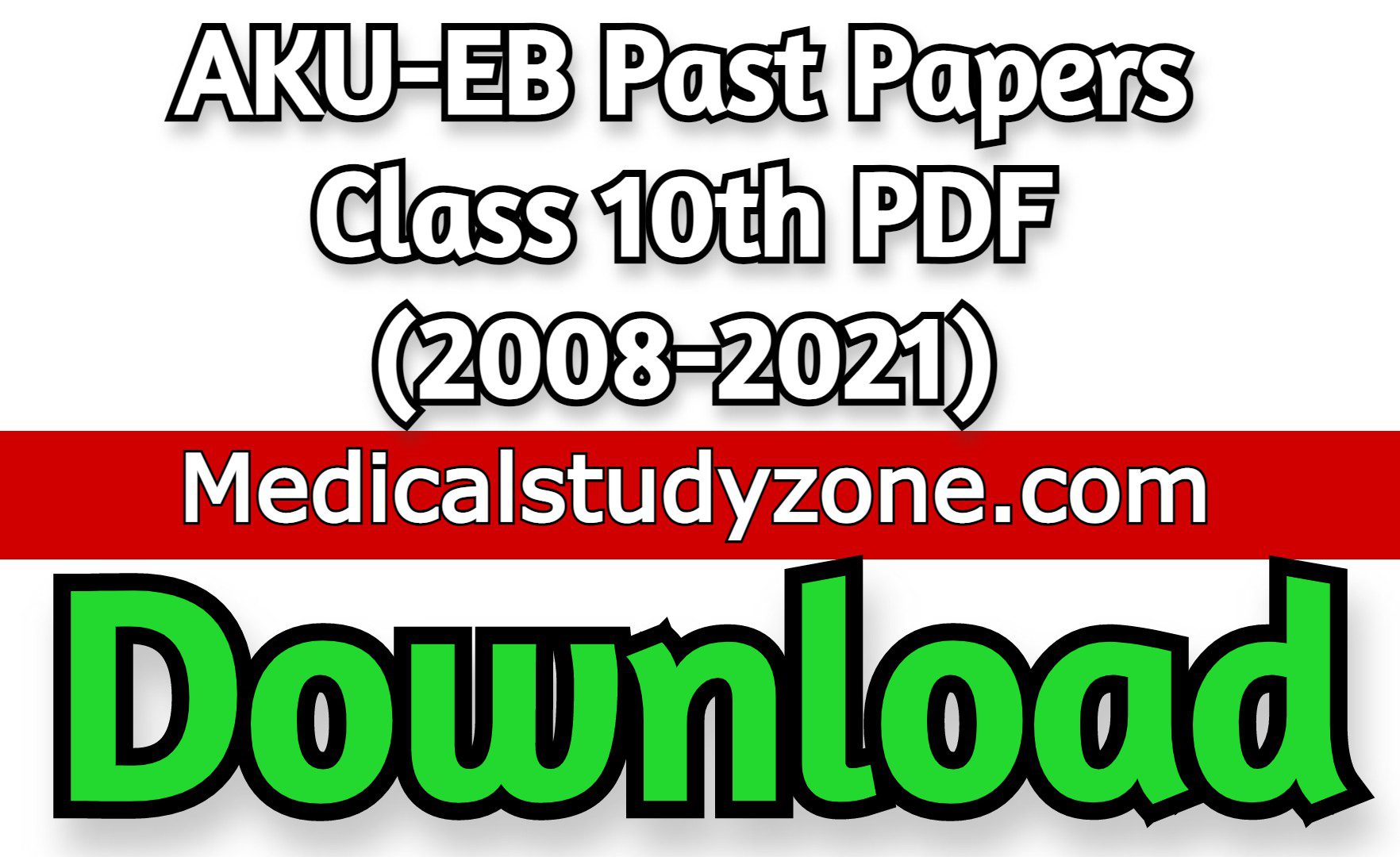
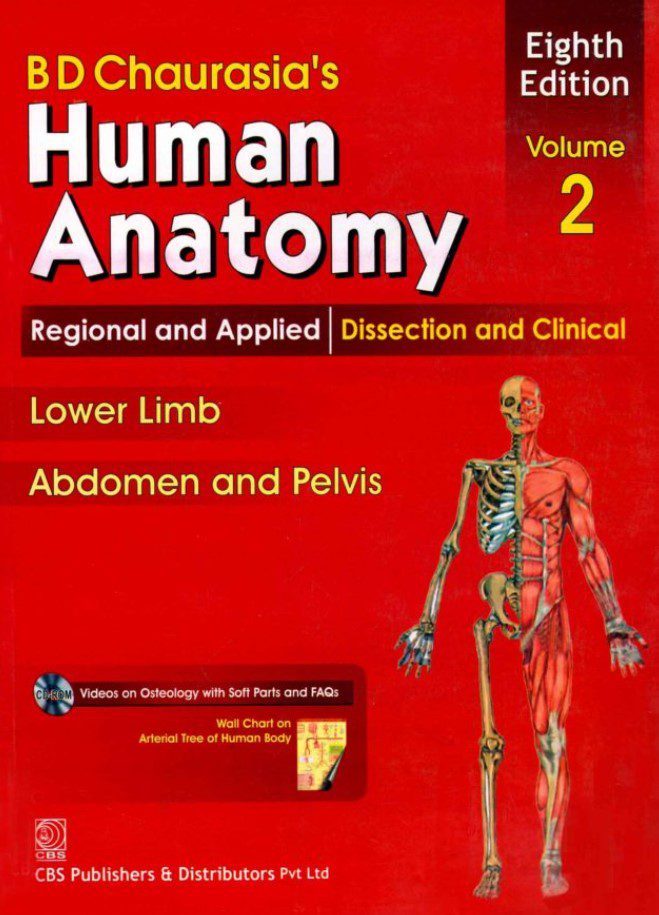
![Download Acland Anatomy Video Lectures Free 2023 [HD Quality] Download Acland Anatomy Video Lectures Free](https://medicalstudyzone.com/wp-content/uploads/2018/10/Download-Acland-Anatomy-Video-Lectures-Free.jpg)
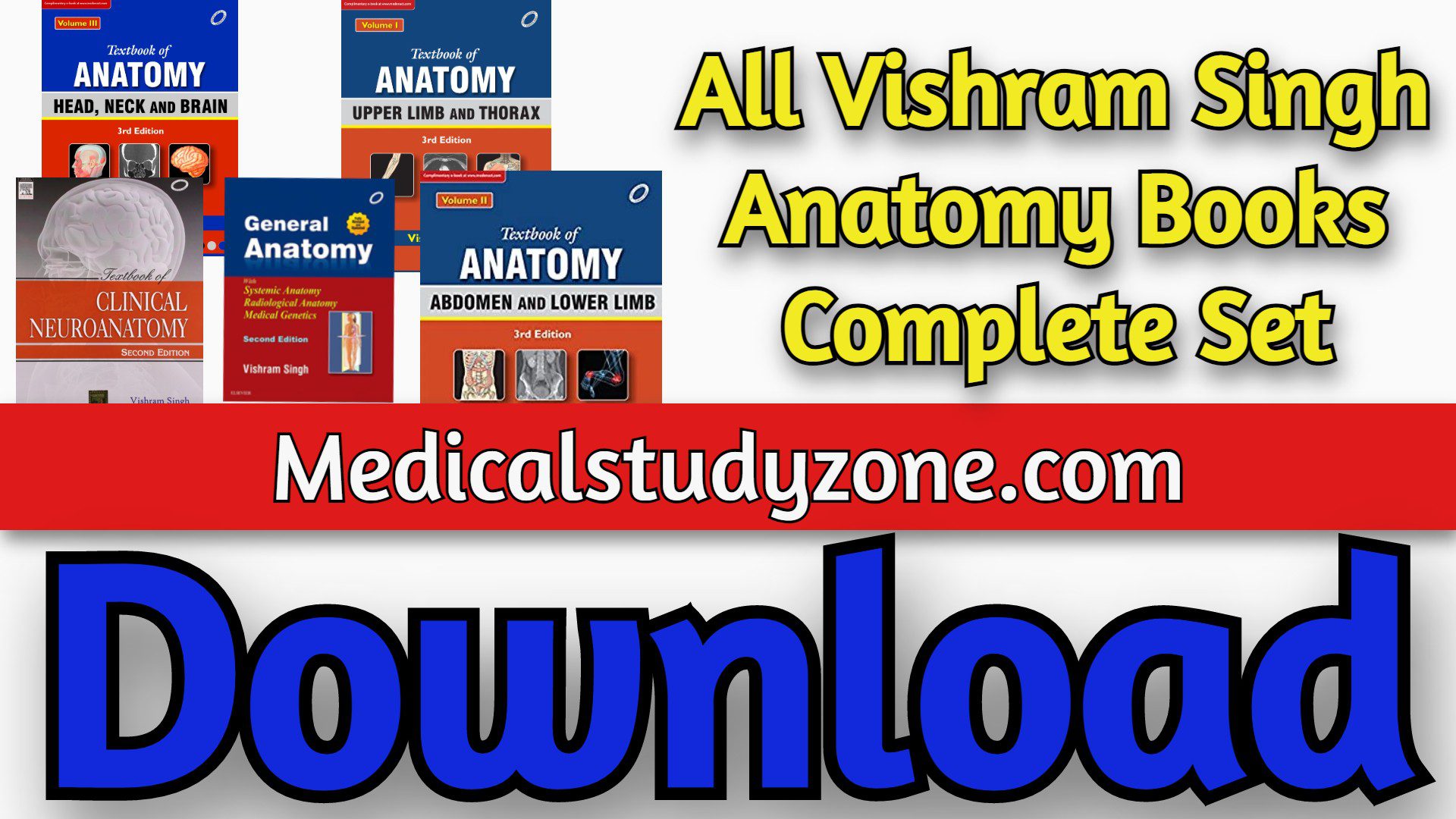
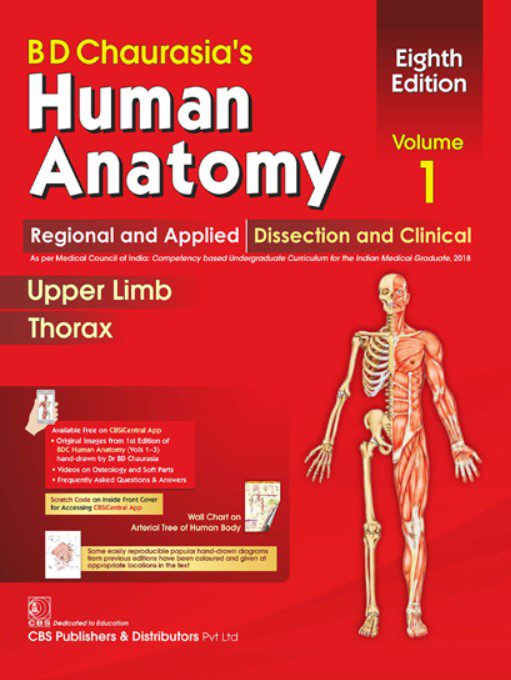
Leave a Reply